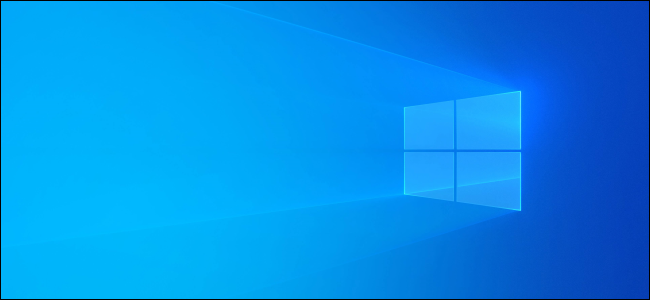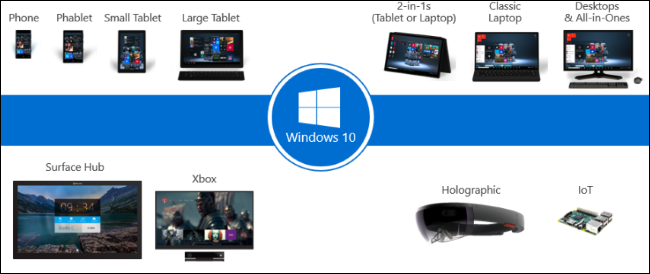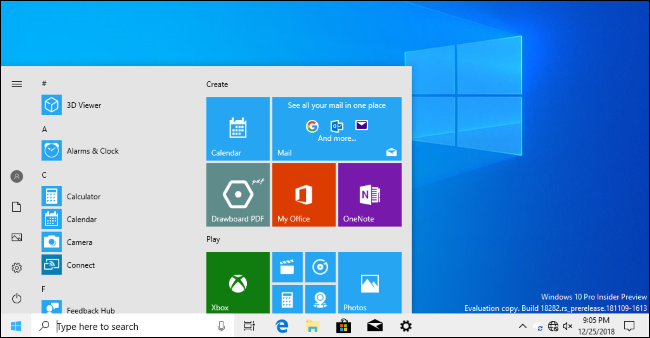Quick Links
Microsoft is working on a secretive "Windows Core OS" project that will unify Windows across all devices and a "Polaris" desktop to go along with it. Here's what we know about it.
Bear in mind that Microsoft hasn't officially announced these projects yet. Windows Core OS, C-Shell, and Polaris may change drastically before release, or they may never even be released.
Microsoft Wants to Go Beyond OneCore
Microsoft wants a single unified operating system for all Windows devices, from Windows 10 PCs to the Xbox One, HoloLens, and potential future Windows Phones. But it's not quite there yet.
Today, a Microsoft project called "OneCore" means that Windows 10, Windows Server, Xbox 10, Windows 10 Mobile, Windows 10 IoT, and the HoloLens operating systems are all built on the same "core" operating system.
This kicked into gear two years ago with the release of the Anniversary Update. Since then, the Xbox One operating system has been based on OneCore, just like Windows 10.
But, although these are now based on the same core, they're still different operating systems on top of that core.
Windows Core OS is a Single OS For All Devices
Microsoft wants all Windows devices to be based on the same operating system, and it's building Windows Core OS to be that operating system. A Microsoft job posting on LinkedIn says Windows Core OS (WCOS) will be "the OS shared across all new devices." That same Microsoft job listing also refers to Windows Core OS as a "new operating system" and says the OneCore team at Microsoft is involved.
Windows Central's Zac Bowden spoke to sources at Microsoft about Windows Core OS back in 2017. Here's how they described it:
Windows Core OS (WCOS for short) is a new, modern version of Windows and is a monumental step forward in making Windows a truly universal OS. In short, WCOS is a common denominator for Windows that works cross-platform, on any device type or architecture, that can be enhanced with modular extensions that gives devices features and experiences where necessary.
Windows Core OS is the next step in making Windows 10 fully modular. It's a single base operating system for all devices. Rather than Windows 10, Windows 10 Mobile, and the Xbox operating system being based on OneCore but still different, they'll all be running Windows Core OS.
According to ZDNet's Mary Jo Foley, Windows Core OS won't natively run Win32 applications---in other words, traditional desktop software. It runs Universal Windows Platform (UWP) apps. However, Windows Core OS is modular. Support for classic desktop applications could be added as a module, and probably will be. But support for traditional software isn't a core part of the system.
As Foley also points out, Windows Core OS was previously known as AndromedaOS inside Microsoft. That's because it may launch on the rumored "Andromeda" mobile device Microsoft is working on, which may include dual screens. This device was rumored for launch in 2018, but Foley writes that Microsoft has gone back to the drawing board. It may never even be released, so don't hold your breath.
Either way, work on Windows Core OS continues. Aggiornamenti Lumia found the first signs of Windows Core OS applications arriving in Microsoft's Store on October 11, 2018.
C-Shell is a Modular Interface
Composable Shell, also known as C-Shell or CShell, is another project related to Windows Core OS.
Currently, devices that run variants of Windows all have their own interfaces built into their unique operating systems. Desktop PCs have the desktop, the Xbox One has the Xbox dashboard, and Windows phones have a phone interface. These are all separate interfaces and are part of each device's distinct operating system.
C-Shell will be a shared shell (interface) that runs on top of Windows Core OS. It's a modular shell for a modular operating system. The shell can adapt to the device type in real time. In other words, Microsoft can build one interface that will intelligently and automatically adapt the device you're using, as you're using it.
For example, a future Windows phone could have a phone interface, but provide a full Windows desktop when docked to a keyboard and monitor This would be a more powerful desktop than the limited "Continuum for Phones" desktop included with Windows 10 Mobile. A gaming device could one day switch between the Xbox One dashboard and Windows desktop.
Currently, none of that could happen. The Windows desktop is part of Windows 10, the Xbox dashboard is part of the modern Xbox operating system, and the phone interface is part of Windows 10 Mobile. But C-Shell means every device can just run Windows Core OS, and C-Shell will provide the right interface on top of it.
Windows Central showed off C-Shell running on a Windows phone back in 2017. It looks pretty similar to the current Windows phone interface, which shows what Microsoft is trying to do. Microsoft isn't trying to reinvent the wheel or make any substantial interface changes here.
Polaris is the Desktop Interface for C-Shell
C-Shell will include multiple "composers," one for each type of interface. Polaris is a composer that will provide a desktop shell. In other words, it's a Windows desktop experience built on top of C-Shell and Windows Core OS. This is a significant break from the past, as Microsoft is rebuilding the Windows desktop experience with modern code.
Other project names reportedly include Andromeda for the mobile device interface, Aruba for the Surface Hub interface, and Oasis for Windows Mixed Reality devices like the HoloLens.
Polaris will be the biggest challenge for Microsoft, as a Windows Core OS system with a Polaris desktop will probably need to run traditional Windows desktop (Win32) software.
This Is Just For New Devices
Don't worry, though: You won't be forced to upgrade. As Microsoft's LinkedIn job posting says, this OS will be for "new devices." In other words, Microsoft won't suddenly upgrade your existing Windows 10 PC to run Windows Core OS with Polaris.
According to Windows Central, the initial release of Windows Core OS will be focused on mobile devices. For example, Microsoft might release "Surface Phone" running Windows Core OS and C-Shell. It would use a mobile composer (Andromeda) most of the time and a desktop composer (Polaris) when docked.
But, in the long term, all new Windows devices may end up running this software---even desktop and laptop PCs. It looks like the future of Windows.



